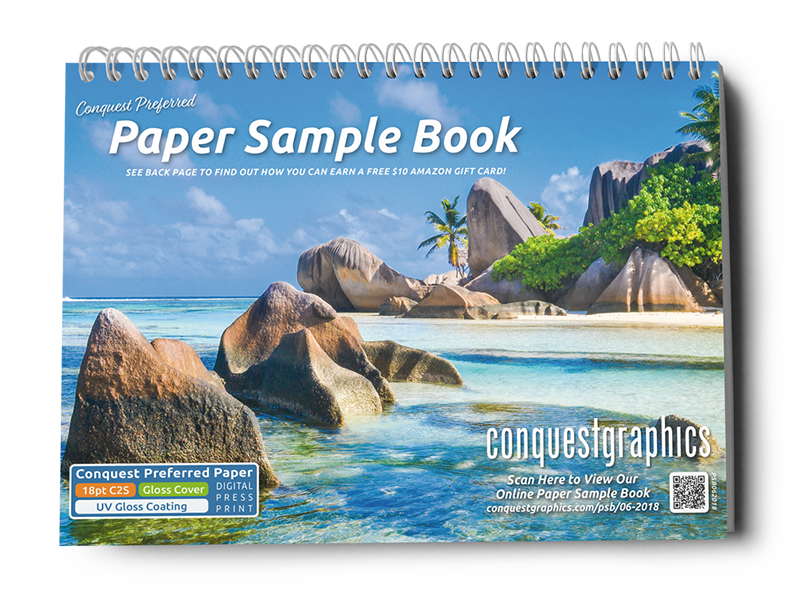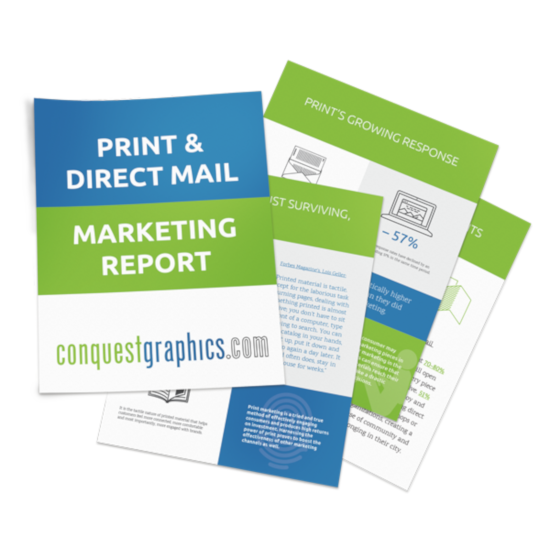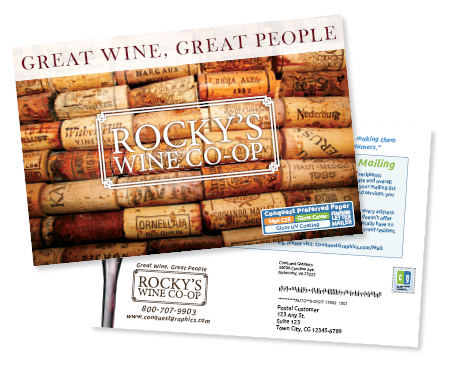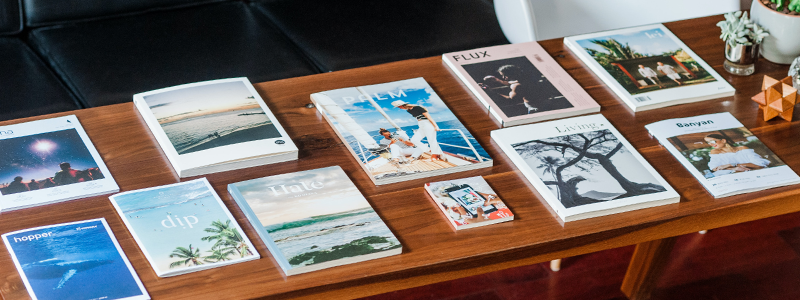
Perfect binding and saddle stitching are two of the most common methods used in print bindery. Yet, there is a lot that comes into play when deciding between saddle-stitched or perfect bound for your multi-paged printed materials.
There are many benefits for both saddle-stitch and perfect binding, and these benefits should be carefully considered when choosing the right binding method for your print project. Read further to find out the benefits of each and what questions you need to answer before choosing the best binding method for your printing needs.
What is the Difference Between Saddle-Stitch and Perfect Binding?
Ultimately the only similarity between saddle stitching and perfect binding is that they are both ways to bind or connect multiple pages together to create a booklet, book, catalog, magazine or calendar. Everything else from the page count needed, to the materials used to bind is different. Including glue vs. staples, the cost, shape of the spine and more.
What is Saddle Stitch Binding?

With saddle-stitch binding, or saddle stitching, multiple pieces of paper are stacked together and then folded in half or folded in nested order to create pages divisible by 4. Along the fold or spine—”spine” refers to the edge of the printed material where the pages are connected—of the pages, 2-3 staples are then punctured on the outside of the line that the spine creates to connect the individual folded pages together.
Because pages for saddle stitched materials are divisible by 4 it is important to layout your design carefully. For example, your front cover page will be printed on the same sheet of paper as your back cover page. And on the same sheet, other side, will include the inside of the front and back cover.
The Benefits or Saddle-Stitch Binding:
- Saddle-stitch binding is the least expensive binding option.
- Popular for low quantity and short run production runs.
- Due to their simpler binding process, turnaround times are generally faster.
- Holes can be easily drilled along the spine to be used within a binder.
- Great for mailing as they typically weigh less and due to their low cost, they allow for cheaper direct mail campaigns.
- They lay relatively flat making it easy to read and write in, for example coloring books or workbooks.
Common Printed Materials That Use Saddle-Stitching:
Materials commonly saddle-stitched include, catalogs, booklets, programs, calendars, magazines, comic books, coloring books, handouts, newsletters, directories, manuals, multi-paged brochures, and more.
What is Perfect Binding?

Perfect binding is the method where pages are stacked together, and a glue is applied to the edge where the spine will be. The cover—usually a heavier stock—is then folded or wrapped around the stacked pages and secured by the glue. You most likely have seen this binding method on soft cover books or catalogs and magazines with high page counts.
Unlike saddle-stitched materials, perfect bound materials do not involve every inner sheet of paper to be folded, making perfect bound books or booklet pages divisible by 2.
The Benefits or Perfect Binding:
- The spine of perfect binding is flat and allows for content to be printed onto it.
- Can accommodate higher page counts and heavier paper stocks.
- Provides a more professional and high-quality appearance and feel.
- They stack and display extremely well.
- Less expensive than hard cover books.
- Great candidate for low quantity and short runs as well.
Common Printed Materials That Use Perfect Binding:
Perfect binding is commonly used for high page count catalogs or magazines, books, booklets, annual reports, manuals, coffee table books, wedding books, photo books, yearbooks, children’s books, and more.
How Do I Know Which One to Choose, Saddle-Stitched or Perfect Bound?
While there are unique qualities and benefits for both saddle stitching and perfect binding, before you choose your type of binding, there are a few questions you need to ask yourself. These questions will help guide you in picking the right method for your budget, goal, and more.
Do you want content to be printed on the spine?
Content printed on the spine can add an extra detail to your printed materials and allows for your materials to be displayed professionally when stacked or placed on bookshelves.
If you are looking to print content on the spine of your book, catalog, or booklet, you would need to choose perfect binding. This is because unlike saddle-stitched materials, perfect bound materials have a spine with a flat surface allowing room for text or images to be printed on to it.
How many pages is your printed material?
Depending on the number of pages you are planning to include within your printed booklet, book catalog, or magazine will determine which binding method is the best option for you.
With saddle-stitching, because pages need to be divisible by 4, the minimum page count for saddle-stitching is 8 pages (2 sheets of paper). Depending on your paper weight, you can have a maximum page count of up to 64 or sometimes 92 pages. However, for page counts above 28, perfect binding becomes another option
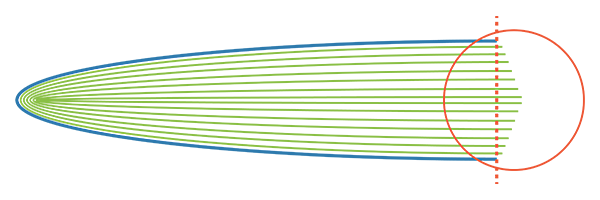
Page count needs to seriously be considered with saddle-stitch binding because to many pages can lead to “page creep.” Page creep is the result of the inner pages nested together beginning to stick out further from the cover page. Think of a hard-shell taco, the more you put in it, the more it overflows the shell.
With perfect binding there is no concern of page creep allowing for much higher page counts. Although, unless paper weight is on the heavier side, it is recommended that the minimum page count is at least 24 or 28 to 40 pages to ensure a thick enough spine and for the glue to be applied in the most secure manner. It is also important to remember that for perfect binding, pages need to be divisible by 2 as one sheet of paper creates two pages—for example, for one sheet of paper the front side is page 1 and back side is page 2.
Do you have a certain budget in place?
If you have a limited budget to consider, saddle-stitch binding is your best option for you to choose compared to other types of binding. This is because saddle-stitching is the least expensive binding option. Despite saddle-stitch bindings low price, this method still provides you with high-quality and professional printed materials.
When it comes to your multi-paged print materials, perfect binding and saddle stitching are both perfect methods to utilize. However, understanding the differences between each and the benefits that come along with each type of binding, will help you choose the best technique that fits the appearance you are going for along with the option that best fits your budget and marketing message. Explore some of our most popular bounded materials and other binding methods we offer at Conquest Graphics by clicking below.
Explore More Today!
